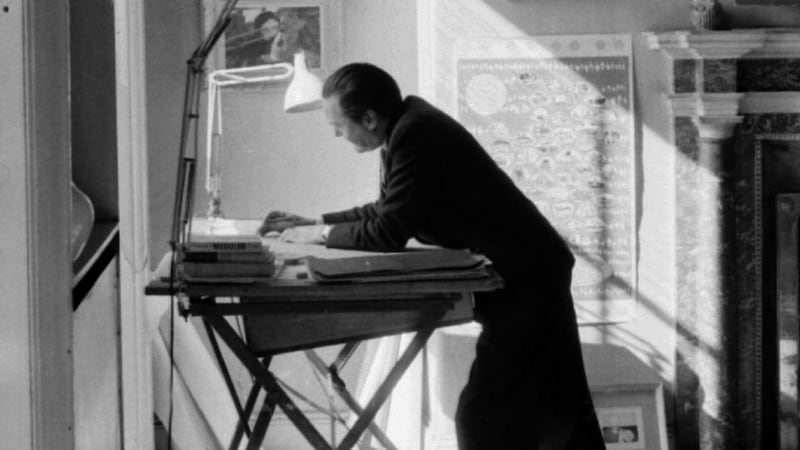In April 1939 the New York World’s Fair opened in Flushing Meadow with the theme of “a new world of tomorrow” and the aspiration of “a fuller, happy existence for the average man”. Within months those aspirations would seem fanciful.
Ireland’s home there, which came to be known as the Shamrock Pavilion because of its shape from above, was designed by Michael Scott. It heralded the country’s growing sense of identity and independence both graphically and in its contents.
The department of industry and commerce, led by Seán Lemass, took liberties by appointing Scott, then a young and relatively unknown architect, without holding the usual competition for such an important commission.

Everything about the project was new. Despite Britain’s efforts to include Ireland under its banner, the country demanded and got its own space. Instead of the round towers, high crosses and thatched cottages inhabited by the “genuine” Irish craftworkers, musicians and dancers of previous international exhibitions, Scott went for broke with a thoroughly modern architectural showcase into which art, history and commerce were seamlessly integrated, a building in which the symbolic shamrock plan was elevated by a modernist cocktail of glazed curtain walls and clean white plaster.
Scott and his patrons saw this as a significant opportunity to advertise the new Ireland. The competition for a sculpture of Éire to embellish the facade was, controversially, won by a newcomer to the country, Friedrich Herkner from Bohemia, who didn’t speak English, let alone Irish, and knew very little of the country. Herkner’s Éire, not terribly innovative even then, was, nonetheless, considered progressive when compared to rival proposals such as Peter Grant’s more anecdotal figure of Éire leaping from flames with her harp at the ready.
Inside, Irish history was personified in the form of a scaled-up version of Oliver Sheppard's Death of Cúchulainn. A 12m-high mural by Maurice MacGonigal reminded Americans of the contribution of famous Irish migrants to their country, and Seán Keating spelled out Ireland's new industrial potential in 54 painted panels telling of the Ardnacrusha hydroelectrical power plant, which occupied an enormous, 22m stretch of the building.
The highlight of the interior, however, was a window commissioned from Evie Hone; My Four Green Fields represented the nationalist aspiration for unity across the island, in the largest secular stained-glass work in the country.
In contrast to the precise detailing of Harry Clarke's work, Hone preferred a cubist-inspired flatness and simplification of form, which provided a perfect vehicle for the heraldic symbols of the four provinces. My Four Green Fields won Hone a gold medal at the fair. It now graces the main stairwell of Government Buildings, in Dublin.
With books by the Cuala Press, furniture by Hicks Brothers, Mainie Jellett's painting Achill Horses – which reminded visitors of both the livestock industry and the west of Ireland – and with ancient sporting traditions celebrated in Keating's Tipperary Hurler, Irish life was well represented.
Yet it was architecture that stole the show. Scott was singled out as the best architect, ahead of future celebrities such as Alvar Aalto and Oscar Niemeyer. The implied optimism about the world and Ireland’s place in it was cruelly mistimed, however. A catastrophic war was on the horizon.
You can read more about this week's artwork in the Royal Irish Academy's Art and Architecture of Ireland; ria.ie

















